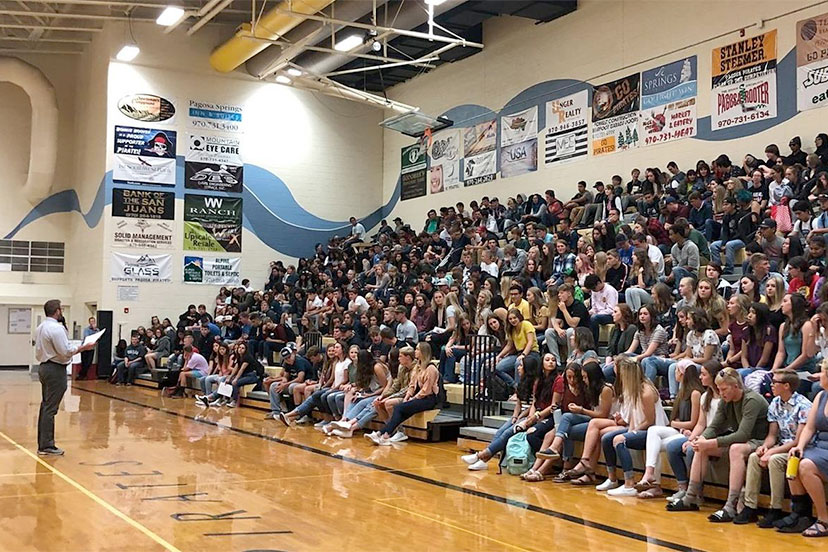Tell me and I forget; show me and I may remember; involve me and I learn.
That’s a quote often erroneously credited, online, to Benjamin Franklin. The actual source might be a Chinese proverb. It seems the Chinese understood this concept a thousand years ago.
We are obviously considering, here, the act of ‘teaching’… the acquisition of knowledge, as a shared social activity. Another version of this general idea comes from philosopher and public education advocate John Dewey:
I believe that consciousness is essentially motor or impulsive; that conscious states tend to project themselves in action.
I believe that the neglect of this principle is the cause of a large part of the waste of time and strength in school work. The child is thrown into a passive, receptive, or absorbing attitude. The conditions are such that he is not permitted to follow the law of his nature; the result is friction and waste…
“…waste of time… in school work…”
How much does the average American retain from 13-plus years of education? I would suggest that whatever gets retained generally involves active participation, and very little involves passive “listening to a lecture”.
One of the things we may have learned, and retained: To sit down and shut up.
I run across that attitude regularly in my efforts to encourage my fellow citizens to become more active in local politics, or to courageously share their ideas and concerns, publicly.
Disclosure: I currently serve on the volunteer Board of Directors for Pagosa Peak Open School, but this editorial reflects only my own opinions, and not necessarily those of the Board as a whole, nor of the school staff, parents, or students.
As mentioned previously in this editorial series, Pagosa Peak Open School — PPOS — contracted with the Archuleta School District to provide a ‘school of choice’ for Archuleta County families, tuition-free, and funded by local and state taxes. The original plan was to grow from grades K-4 to an enrollment of about 135 kids, in grades K-8. The surveys done by the founding organizers suggested that only certain families in Pagosa Springs were looking for an educational alternative outside the conventional public schools, and that PPOS would attract about 15 students for each grade level. To make this work financially… and socially… and ‘educationally’… the plan was to have mixed-age classrooms, where the older students could serve as ‘mentors’ to younger, less experienced students.
The founding organizers felt this design — mixed ages, working together in the learning process — reflected the way that humans naturally learn from one another.
As American education became institutionalized during the 20th century, schools had adopted the practice of ‘same-age’ classrooms, where every student is at approximately the same stage of academic learning. This design creates a situation where, practically speaking, the only person in the room with experience in the subject at hand is the Teacher, surrounded by a group of 20 to 30 inexperienced youngsters.
When learning takes place in the ‘real world’ of adults, however, it’s more often the case where an inexperienced person is surrounded by numerous experienced people.
Which style of learning is most effective? One instructor surrounded by 30 learners? Or one learner surrounded by 30 instructors?
American schools have, in general, picked the former approach. Necessarily, that model involves a considerable amount of sitting down and shutting up.
Another aspect of ‘schools of choice’ might be active participation in the learning process… as in the case of schools like Pagosa Peak Open School, which have adopted a model of “Project-Based Learning”, often referred to in the education industry as PBL.
If I want a person to truly understand a process, I will want them to actively participate in some part of that process. A student learns more effectively by doing than by listening.
Serving on the PPOS Board of Directors has certainly presented me with an opportunity to learn new things. A few weeks ago, I learned that the Colorado Legislature increased the amount of Per Pupil Revenue — PPR — that will be provided to our public schools next year. Last year, the basic PPR amount was $9,640 per student enrolled on October 1, 2022. Next year, the projected amount is $10,723 per student.
That’s a 10% increase, per student. Not quite equal to the percentage increase of our property valuations this year… but still, significant. I assume our Colorado legislators looked at the massive property tax increases that many towns and cities will be seeing next year, and figured they could afford to share a portion of it to the public schools.
According to an article in the Pagosa Springs SUN, the Archuleta School District has scheduled meetings of certain stakeholders to discuss the Mill Levy Override that was approved by local voters in 2018. That measure allowed ASD to collect up to $1.7 million per year in property tax, over and above the school district’s normal tax collections. The district is currently collecting about $1.5 million annually, used mainly for “safety and security” at the district’s various schools, including PPOS, and to help fund salary increases that have put ASD teachers among the best paid in Colorado.
The Mill Levy Override is set to expire in 2025. It typically takes months, or years, to put together a successful tax increase measure in Pagosa Springs…


